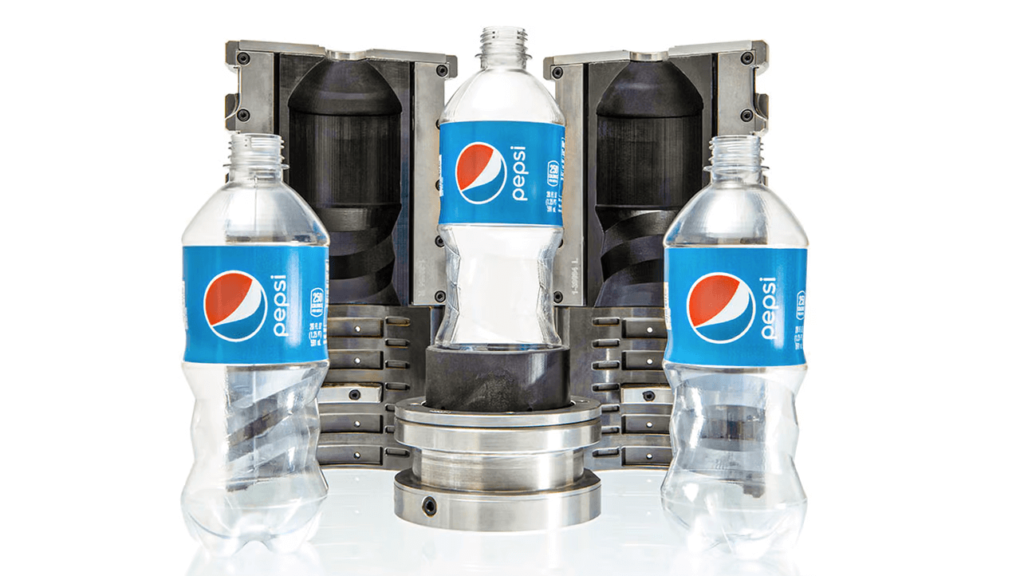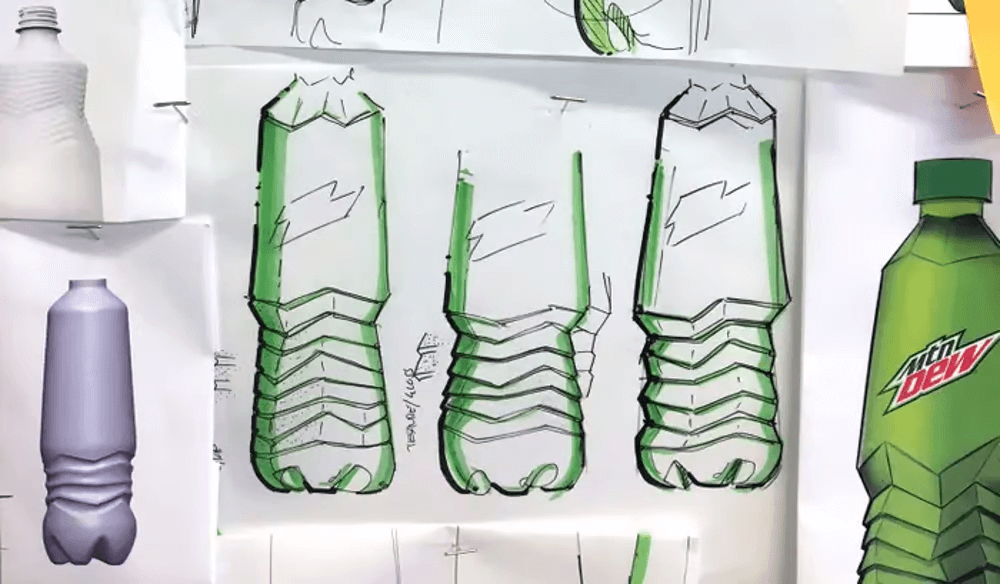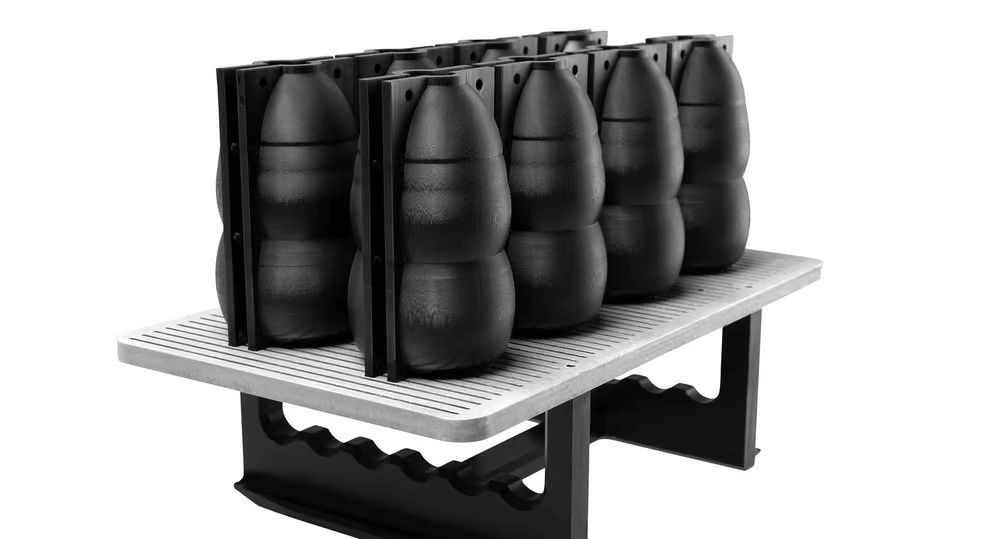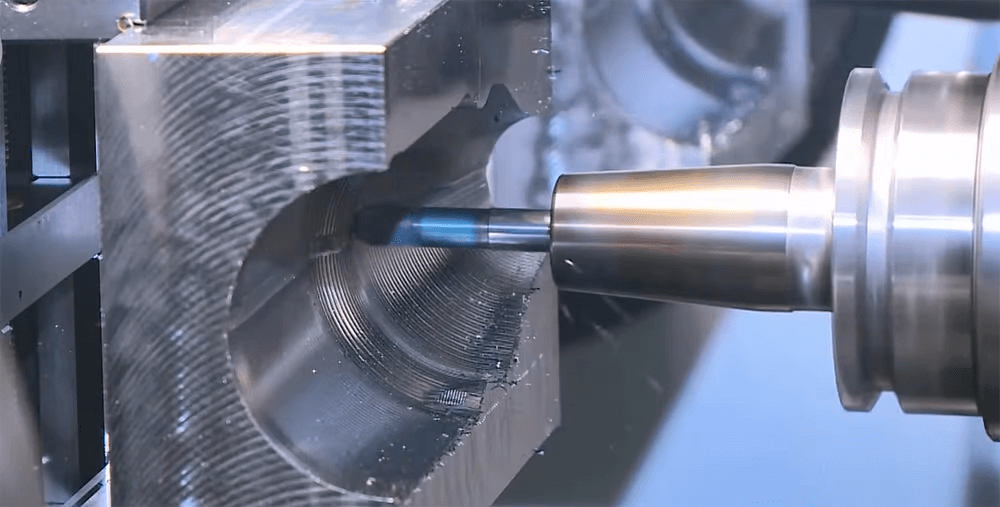Compared to traditional metal tools, PepsiCo is gaining speed, reducing costs and expanding flexibility by turning to 3D printers to make bottle shapes.
Market speed has never been more important in the consumer goods sector, as brands seek to develop new packaging designs to meet the ever-changing desires of customers and stand out from the competition. But it is expensive to change the design of the packaging, especially in the bottled beverage industry. The creation of conventional metal blow molding tools at PepsiCo's R&D campus in Valhalla, New York, meant weeks of waiting and thousands of costs.
PepsiCo can spend up to $ 10,000 to produce a single set of metal molding tools, depending on its complexity, according to Max Rodriguez, senior manager of global research and packaging, advanced engineering and design at the PepsiCo Research Center.
Once the digital design of the bottle has been created, it will take up to four weeks to process the metal mold using conventional production, and then another two weeks to obtain a test unit to perform the actual molding by prototyping. .
Accelerated prototyping to accelerated production
To bring new products to market faster by reducing the time and cost of prototypes, Rodriguez began working with 3D printers a few years ago.
Although 3D printers were excellent at prototyping design, early attempts at 3D dot matrix printing tools were untenable. When 3D printed forms were used in inflating machines, they could only produce about 100 bottles before the matrix began to fail. This prompted Rodriguez and his team to explore the use of a hybrid approach, combining parts of a conventional metal shape with 3D printed inserts.
This hybrid model - which PepsiCo patented in late 2020 - involves the use of a universal metal outer shell that fits most commercial inflator machines. PepsiCo then investigated the use of additive manufacturing to print only the main internal parts of the matrix that give the geometry of the final product.
Consider the solution for 3D printing
Working with Chicago-based distributor of additive manufacturing technology Dynamism, the PepsiCo team explored industrial 3D printing solutions that could meet their size and material requirements.
"Our relationship with PepsiCo began years ago with desktop 3D printers for prototyping," said Dynamism CEO Douglas Krone. "When their needs turned to industrial applications, we introduced them to 3D printers designed for the production of industrial parts."
Between 2020 and 2022, Rodriguez conducted tests to prove the concept of a blowing machine in a third-party pilot plant, launching bottles at speeds of 600 to 800 bottles per hour, with a single hybrid form. The concept of a modular set of forms was successful, but the durability of the materials was still a challenge.
"When we were working on a solution to generate matrix tools using additive manufacturing, we focused on identifying a material that would withstand the conditions of blow molding that are common in our production environment," says Rodriguez. "In applications for thermal adjustment of blow molds, it is common in the industry to heat the molds to a temperature of about 140 ° C. It was also important that the material could withstand an impact pressure of 40 bar.

The only viable material solution at the time Rodriguez began his research about three years ago was cyanate esther, he said. "Since then, major material suppliers, such as Henkel Loctite and BASF, have accelerated the development of materials for additive manufacturing applications.
Henkel introduced its XPEEK147 material about a year ago, which provided several benefits to cyanate esther, according to Rodriguez.
PepsiCo has been producing bottles on a daily basis using its hybrid instrument approach for the past few months, Rodriguez said. "Time and cost are obviously important, but it is more important to have the flexibility to go through many different iterations of design at a record pace so that we can assess the effectiveness of all downstream activities. That really helps us speed up. ”
These downstream activities include confirming how the bottle will perform on PepsiCo's packaging lines, in vending machines and throughout its distribution network.
Attempts at blow molding at PepsiCo's R&D center provided data showing that samples of 3D printed form were comparable to samples of metal form.
Rodriguez has 3D printed forms of the Carbon M2, Stratasys J55 and Markforged X5 printers to confirm that the matrix tool concept is agnostic for the printer.
4 weeks to 48 hours, $10,000 to $350
A complete set of molds can be made in 12 hours, with 8 hours of 3D printing time and 4 hours of post-processing or curing. The price is around $350 for a set of molds. These hybrid-made molds can be used for more than 10,000 bottles before damage. The result is almost a 96% cost reduction compared to traditional metal tools.
"By taking advantage of these capabilities," says Rodriguez, "we expect a 30% faster development cycle." However, this is not just about the ability to 3D print a set of shapes. "3D printing capability is combined and intertwined with our virtual analysis capability. AM complements virtual analysis and vice versa, so that a faster development cycle is achieved through the collective use of these advanced tools. ”
The 3D printed matrix insert and laboratory-scale inflating machines are used to generate functional samples for low-volume production. "The intention is not to replace metal molds for high-volume production," said Rodriguez. "3D printed mold sets can be mounted on a typical production platform for pull-out molds, as the external dimensions of the housing are universal and compatible with our typical production platforms. However, for regular production, it is best to invest in metal tools, as we expect molds to produce millions of bottles a year.
Is the next step for PepsiCo metal 3D printing? "Metal 3D printing molds are in the works," says PepsiCo.




0 Comments